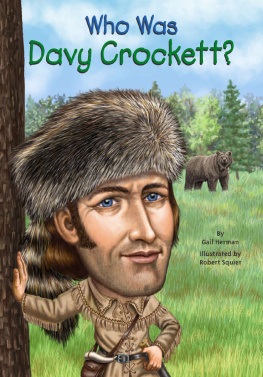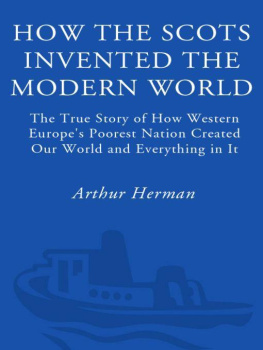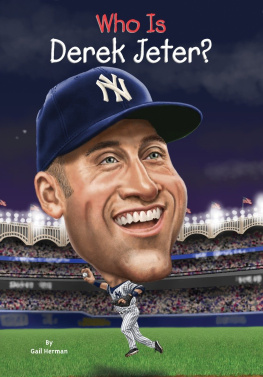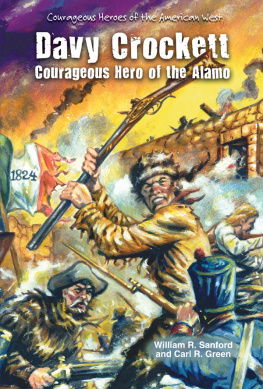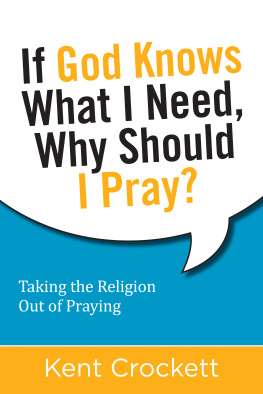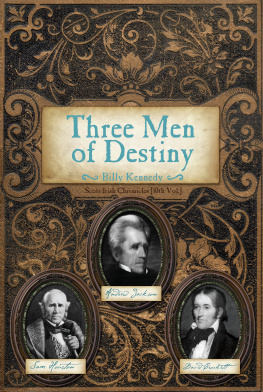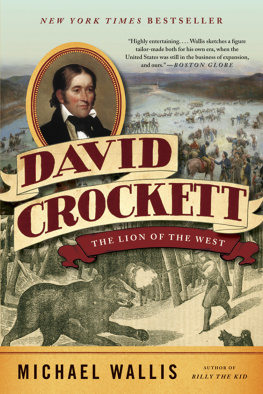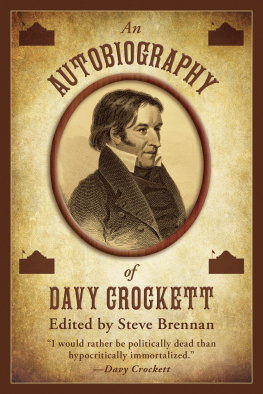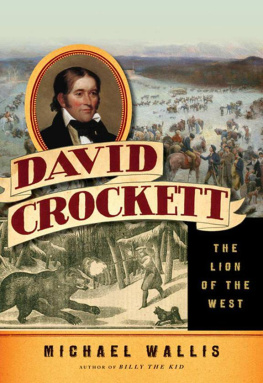Who Was
Davy Crockett?
Who Was
Davy Crockett?
By Gail Herman
Illustrated by Robert Squier

For the Crocitto-Kenny/Kenny FamilyGH
To Mom and Dad. Remember the Alamo!RS
GROSSET & DUNLAP
Published by the Penguin Group
Penguin Group (USA), 375 Hudson Street, New York, New York 10014, USA

USA | Canada | UK | Ireland | Australia | New Zealand | India | South Africa | China
Penguin Books Ltd, Registered Offices: 80 Strand, London WC2R 0RL, England
For more information about the Penguin Group visit penguin.com
All rights reserved. No part of this book may be reproduced, scanned, or distributed in any printed or electronic form without permission. Please do not participate in or encourage piracy of copyrighted materials in violation of the authors rights. Purchase only authorized editions.
Text copyright 2013 by Gail Herman. Illustrations copyright 2013 by Robert Squier. Cover illustration copyright 2013 by Nancy Harrison. Published by Grosset & Dunlap, a division of Penguin Young Readers Group, 345 Hudson Street, New York, New York 10014. GROSSET & DUNLAP is a trademark of Penguin Group (USA).
Library of Congress Cataloging-in-Publication Data is available.
ISBN: 978-0-698-15970-9


Who Was
Davy Crockett?

Shots ring out. Arrows whiz through the air. The year is 1813. US soldiers are fighting Creek Indians in Alabama.
Davy Crockett and a friend stop their horses across the river from where the battle is taking place. Sounds like the major is in trouble, Davy says. Well surround them. Give them the old Crockett charge.
Davy is a pioneer known for braveryand bear hunting. He creeps around one side of the water. His friend goes around the other way. From opposite sides, they call out orders.
Company A! Charge!
Company B! Charge!
Of course, there is no Company A or B. Only Davy and his friend. Aiming rifles, they pick off the enemy. The Indians retreat, thinking many more US soldiers have arrived. The US major thinks that, too. You mean there are just two of you? he asks Davy a few minutes later.
Millions of Americans, most of them kids, saw this battleon television. Davy Crockett: Indian Fighter aired on December 15, 1954. Only four more Davy Crockett episodes were shown. But on those Wednesday nights, at 7:30 p.m., kids across the country tuned in to watch on black-and-white TV sets.
It was just the beginning of the television age, and not every family owned a TV. Still, the adventures of Davy Crockett became so popular that at one point, forty million peoplealmost one-fourth of all Americanswatched the show.
The theme song, The Ballad of Davy Crockett, was number one on the music charts for months. Millions of kids bought Davy Crockett caps, lunch boxes, pajamas, and more.
Davy Crockett was like a superhero. But he was a real person, born on the frontier. He lived in a time when America was still a very young country. It was a time when families headed west to make new and better lives for themselves. Anything seemed possible.
Davy Crockett became an American legend. Not all the stories about him are true, however.
So who was he, really?

Chapter 1
A Pioneer Family

Although he became famous as Davy Crockett, historians say that he liked to be called David. So thats what hell be called here!
The Ballad of Davy Crockett begins with the line, Born on a mountaintop in Tennessee Like most stories of his life, its only partly true. David was born in what is now eastern Tennessee. But not on a mountaintop. He was born by the Nolichucky River, in Greene County, on August 17, 1786.
Davids grandfather was named David Crockett, too. He came to America with his family around 1725. (The Crocketts had Scottish roots but had been living in Ireland.) In America, the family traveled from Pennsylvania down the coast to the Carolinas. After that, they headed west across the Appalachian Mountains. They were searching for better land to farm.
The Crocketts reached Tennessee in 1776. Today we think of the West as states like Montana, Wyoming, Utah, and Nevada. But in the late 1700s and early 1800s, the West meant land beyond the original thirteen colonies.
Just a year earlier, the Cherokee people sold much of their land to a group of white settlers. Thousands more soon moved in. Some bought land. And some squatted.
Squatters didnt buy land. They had no legal right to it. But no one else was living in these parts of the wilderness. So along with other settlers, they cleared forests, built cabins, and started farms.
The US government began claiming land, tooland that had always been home to Native Americans. The government sold this land to settlers.
Life was hard on the frontier. There were no towns or cities yet. People lived miles from one another. But the opportunities seemed endless. By 1790, around 100,000 white settlers had traveled from the original colonies to Tennessee and Kentucky. By 1800, 400,000 whites had settled there.
The Indians had not expected these people to build on the land and take it over. They thought the white settlers just wanted to hunt.

